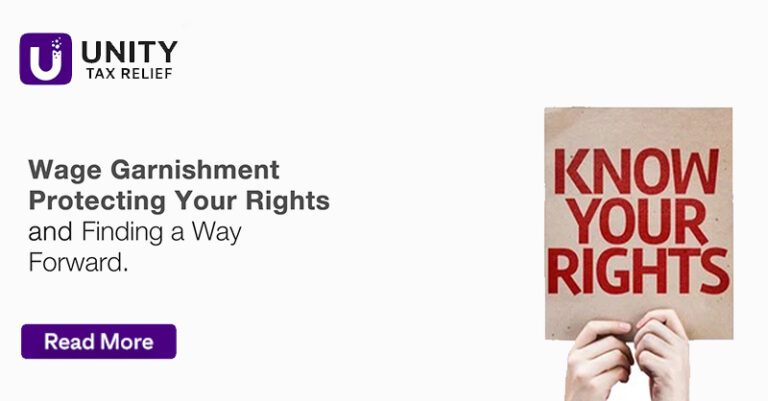When money is legally withdrawn from your paycheck and given to another person, this is known as wage garnishment. It indicates a legal procedure that allows the third party involved [also addressed as a garnishee] to withdraw a certain financial amount directly from the debtor’s bank account. The employer responsible for paying the employee is legally bound to acknowledge and respect the settlement between the other two parties concerned.
However, certain restrictions imposed by the Consumer Credit Protection Act, which compels the garnishee to use the withdrawn amount for specific objectives such as clearing pending tax dues, fulfilling child support restrictions, paying student loans, avoiding bankruptcy, etc. There is no prior need for a court order to implement the wage garnishment standard.
What Is the Process for Wage Garnishment?
Although it is typically up to an employee to make financial decisions, there are some obligations they must meet. Some of these obligations, including federal and state taxes, are frequently withheld from paychecks. However, there are situations when an employee may fail to meet other debts they have accrued.
Creditors may file a lawsuit to get court-ordered wage deductions from an employee’s pay if they they are not paid on a debt or other financial obligation. Depending on the nature of the debt, wage garnishments may result from court orders or government actions.
The debtor’s employer will be notified of the wage garnishment by submitting a “writ of garnishment” by the court or government body.
According to wage garnishment laws, an employer must deduct a predetermined percentage from a debtor’s paycheck until the point at which the individual is no longer in arrears. Calculating the rate removed from each paycheck requires considering a person’s total wages, the type of debt they have, how long they have been in default, how much disposable money they have, how much they owe in debt, and more.
What do you need to know about Wage Garnishment?
The following essential details are crucial to learning to comprehend wage garnishment completely:
- Wage garnishment typically happens when a creditor has filed a lawsuit against you and won a ruling from a judge declaring that you owe them money. With the help of this judgment, they can now pursue wage garnishment as a method of debt collection.
- Before wage garnishment starts, you should have a formal notice. In this notice, you will learn about the creditor’s intention to garnish your pay, the precise amount they want to take, and information about your legal rights and available options.
- Federal and state laws restrict the amount deducted from your salary as a garnishment. These restrictions are in place to make sure you have enough money left over to pay for basic living expenses.
- A legal priority order may be in place if you face multiple wage garnishments. For garnishment, for instance, bills for child support or federal taxes frequently take priority over other types of debt.
- Your employer is a crucial player in the process of garnishing your wages. They must legally withhold the stipulated sum from your paycheck and transmit it to the creditor once they get a garnishment order. Employers are not allowed to treat you differently because of a garnishment.
Which Debts Give Rise to Garnished Wages?
Wage garnishments may occur in a variety of circumstances. Examples of frequently used garnishments are:
- Inheritance Child support
- Failure to pay back a student loan
- Owes taxes
- Additional consumer debts, such as credit card or auto loan debt,
Pay garnishments do not include voluntary pay assignments made by the employee, such as those made for health insurance or pre-tax benefits plans. When an employer receives notice of a salary garnishment, it’s critical to remember that it must be processed as soon as possible because failing to do so could result in fines.
How Much Pay Can Be Garnished?
Title III of the federal Consumer Credit Protection Act (CCPA) mandates that the amount of pay garnished is based on an employee’s “disposable earnings,” or the amount left over after legally required deductions, for the majority of garnishments, including child support, creditor garnishments, and student loan garnishments.
The employee’s total salary minus all required deductions, such as federal, state, and municipal taxes, state unemployment insurance contributions, and Social Security taxes, is generally referred to as disposable income. Payroll received in the form of salaries, bonuses, sales commissions, and earnings from pensions and retirement plans are all examples of disposable income. Service fees are recognized as earnings for garnishment, whereas tips are typically not.
Tips For Garnishing Wages
- Employers must give written notice to employees of wage garnishment court orders as soon as they become aware of them. There may be a form available for this, such as Form 668 for a federal levy, depending on the type of garnishment. The amount deducted from each paycheck and the duration of the wage garnishment can all be specified in a letter that the employer can also create.
- Additionally, an employer should inform the payroll and/or human resources departments so that they can begin the wage garnishment procedure and make sure that payments are made to the proper agency or creditor (regardless of whether the employee wants to comply or not).
- By taking these steps, the company can avoid potential legal implications from failing to fulfill the request.
- The process for terminating the garnishment will differ depending on the type of garnishment after the employee’s debt has been settled. Employers will get Form 668-D for federal levies, a notification or letter from the state for child support, and a “Notice of Termination or Release of Wage Garnishment Order” from creditors for wage garnishments.
Conclusion
Therefore, be sure to activate the Wage Garnishment standard to help your peers who need financial assistance. Conduct thorough online research and seek professional tax assistance to avail more information about this topic.






